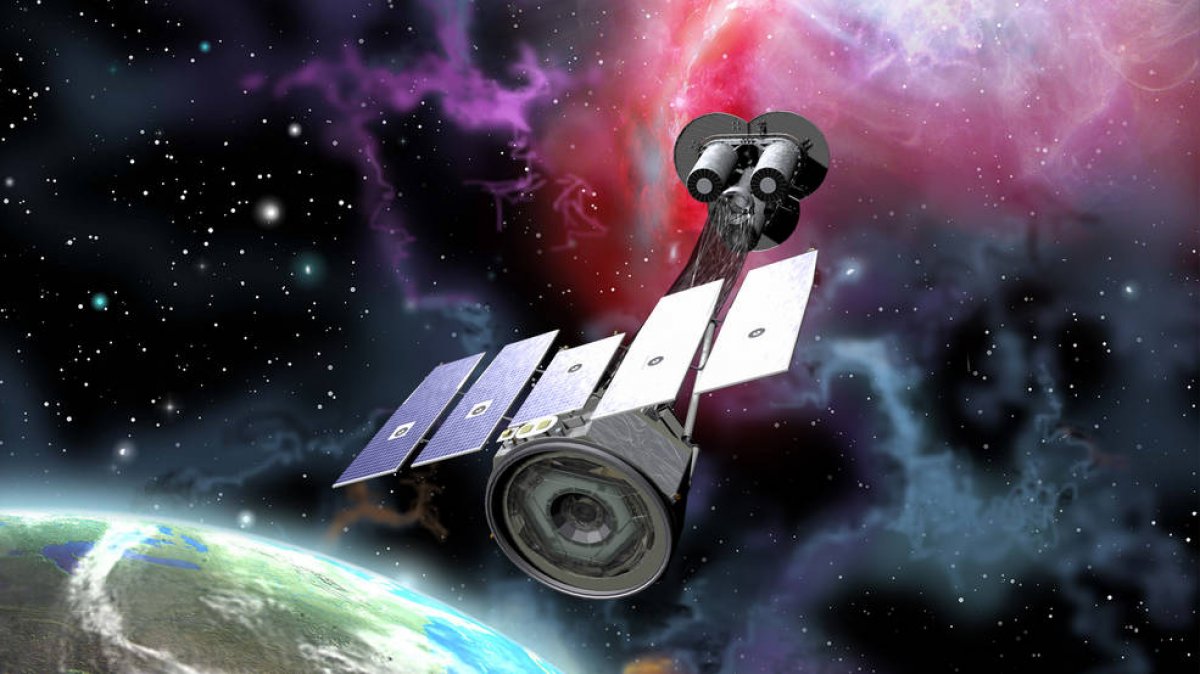NASA is preparing the launch of a new X-ray telescope that will search the Universe making observations of some of its most powerful and violent objects and events, such as neutron stars and black holes.
The Imaging X-ray Polarimetry Explorer (IXPE) spacecraft is scheduled to launch from NASA's Kennedy Space Center in Florida on a SpaceX Falcon 9 rocket on Thursday after 1 a.m. (EDT). Live coverage of the launch will begin on the space agency's website and social media platforms on Wednesday at 11:30 a.m.
IXPE will be NASA's first mission dedicated to measuring the polarization of X-rays from a variety of cosmic sources. This will allow astrophysicists to investigate the powerful magnetic fields of cosmic objects like neutron stars and black holes, which form when massive stars run out of fuel and can no longer support themselves against gravitational collapse.
Electromagnetic radiation, such as X-rays and visible light, is made up of waves that travel in a variety of orientations. When light hits certain objects or substances they act as a filter, only allowing it to pass through if it has a particular orientation.
A common example of this is polarizing sunglasses, which only allow light with a vertical orientation through to the wearer's eyes, blocking all light with a horizontal orientation. Polarized light from around a black hole or neutron star has a different cause, arising from the effect of powerful magnetic and electric fields.
This means that the polarization of X-rays from around these objects can teach astrophysicists about the violent and chaotic conditions in their environments. One example of researchers using this phenomenon to great effect occurred earlier this year.
In April, a team of astronomers, including Assistant Professor at Radboud University, Netherlands, Monika Mościbrodzka, used the Event Horizon Telescope (EHT) to catch an image of the supermassive black hole at the heart of Messier 87 (M87), 55 million light-years from Earth, in polarized light.

The image of the black hole, which had previously been imaged in visible light in 2019, provided the clearest picture to date of magnetic fields at the edge of a supermassive black hole.
In the process, the research, which was published in The Astrophysical Journal Letters, formed a crucial piece of evidence in the understanding of the environments around these objects that sit at the heart of most galaxies.
Magnetic fields around black holes are thought to play an important role in how those objects "feed" on matter like gas and dust that surrounds them is a disc gradually falling to their surface.
A better understanding of these magnetic fields could help scientists understand the processes that launch powerful astrophysical jets from the regions around black holes.
According to NASA, IXPE improves on the sensitivity of X-ray polarimeter aboard the Orbiting Solar Observatory OSO-8 hopefully helping better determine magnetic fields around black holes and powerful magnetic neutron stars called magnetars.

Uncommon Knowledge
Newsweek is committed to challenging conventional wisdom and finding connections in the search for common ground.
Newsweek is committed to challenging conventional wisdom and finding connections in the search for common ground.
About the writer
To read how Newsweek uses AI as a newsroom tool, Click here.








